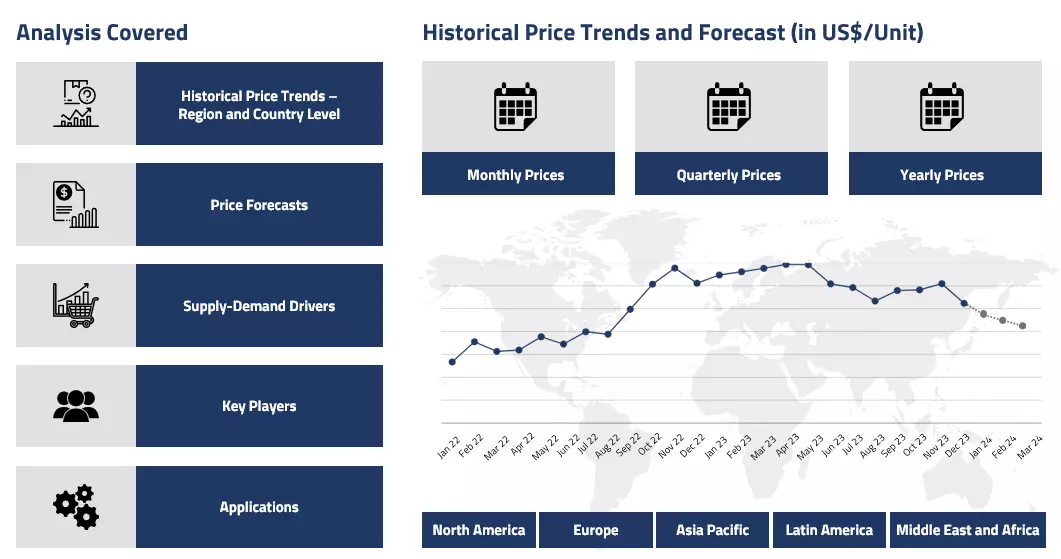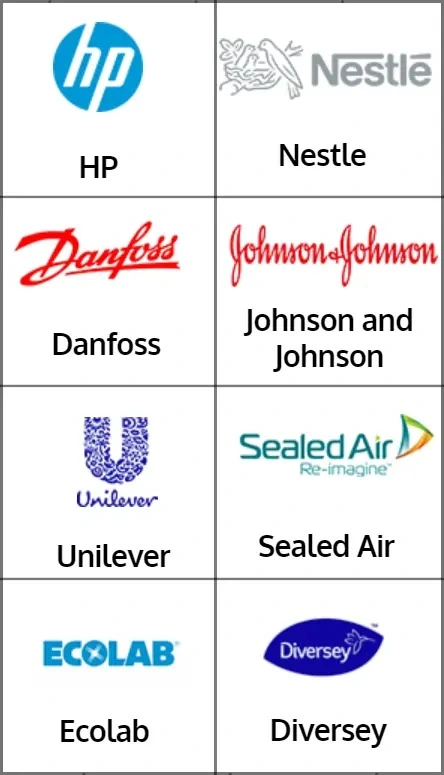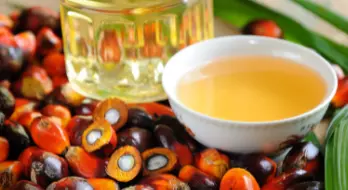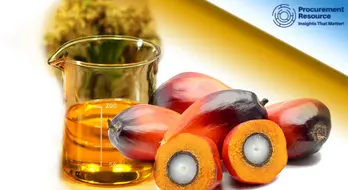Product
Crude Palm Oil Price Trend and Forecast
Crude Palm Oil Price Trend and Forecast
Crude Palm Oil Regional Price Overview
Get the latest insights on price movement and trend analysis of Crude Palm Oil in different regions across the world (Asia, Europe, North America, Latin America, and the Middle East & Africa).
Crude Palm Oil (CPO) Price Trend for Q2 of 2025
| Product | Category | Region | Price | Time Period |
| Crude Palm Oil | Agriculture, Farming and Commodity | China | 1277 USD/MT | April 2025 |
| Crude Palm Oil | Agriculture, Farming and Commodity | China | 1203 USD/MT | June 2025 |
| Crude Palm Oil | Agriculture, Farming and Commodity | India | 1454 USD/MT | April 2025 |
| Crude Palm Oil | Agriculture, Farming and Commodity | India | 1040 USD/MT | June 2025 |
| Crude Palm Oil | Agriculture, Farming and Commodity | Malaysia | 998 USD/MT | April 2025 |
| Crude Palm Oil | Agriculture, Farming and Commodity | Malaysia | 916 USD/MT | June 2025 |
Stay updated with the latest Crude Palm Oil (CPO) prices, historical data, and tailored regional analysis
Asia
The Chinese palm crude oil market during Q2 2025 primarily experienced prices trending lower, driven by weak futures, subdued trading, and weak end-user demand. At the beginning of the quarter, consumers hesitated as world palm oil output increased resulting in increased supply and exerting downward pressure on prices. Palm oil prices at the end of the period witnessed slight rebound although the overall market sentiment was subdued. The prices were about 1277 USD/MT (Spot FD) in April and around 1203 USD/MT in June.
Crude Palm Oil (CPO) Price Chart

Please Login or Subscribe to Access the Crude Palm Oil Price Chart Data
The Indian market also witnessed downward movements amid price adjustments and policy shifts. Declining palm oil prices made it the most popular option over soy oil and sunflower oil. This attracted refiners and processors to increase their buying, particularly since inventories were low. The move by the government to reduce the import duty on crude edible oils also increased buying interest. The outcome was a notable increase in palm oil imports, and a slide in domestic rates. The prices were about 1454 USD/MT (FOB) in April in the Indian market and went down to about 1040 USD/MT in June.
Pricing story was not very different in the Malaysian market too compared to the other Asian markets. Heavy inventories were creating trouble in sustaining the prices, especially with competing vegetable oils also trading on the downside. Export demand improved later in the quarter, but not sufficiently to counteract the effects of surplus supply. The prices were about 998 USD/MT (FOB) in Malaysia in April and turned down to around 916 USD/MT in June.
Europe
In Europe, palm oil prices resembled the trends of the other global market during the quarter. Demand for new imports was weak in the region, with buyers taking a wait-and-see approach amidst consistent competition from other oils coupled with the impact of surplus global supplies. Demand from food and industrial industries continued to be steady, and most purchasers remained cautious as the market sentiments remained buoyant for majority of the said quarter.
North America
The North American market was also reflective of the global trends, with prices for palm oil reacting to changes in world supply and the trend of competing vegetable oils. United States and Canadian buyers were attuned to price movements in soyoil and canola, which tend to lead purchasing behavior in palm oil as well. Increased inventories across the international markets kept the downward pressure persistent. Overall, lukewarm market sentiments were witnessed for crude palm oil throughout the said time period.
Analyst Insight
According to Procurement Resource, looking forward, palm oil markets remain sensitive to global supply and demand developments, with traders closely watching inventories, policy shifts, and competition from other edible oils.
Crude Palm Oil (CPO) Price Trend for Q1 of 2025
| Product | Category | Region | Price | Time Period |
| Crude Palm Oil | Agriculture, Farming and Commodity | China | USD 1,330/MT | January 2025 |
| Crude Palm Oil | Agriculture, Farming and Commodity | India | USD 1,334/MT | March 2025 |
Stay updated with the latest Crude Palm Oil (CPO) prices, historical data, and tailored regional analysis
In the first quarter of 2025, Chinese crude palm oil prices exhibited a relatively stable yet mildly fluctuating trend before softening toward the end of the period. Prices hovered around USD 1,330/MT (CIF) in January and slightly increased to approximately USD 1,334/MT by March.
The quarter began with modest gains, supported by steady demand and firm supply conditions. Dealers responded to positive market sentiment with cautious restocking, aided by manageable inventories and consistent import flows. Palm oil remained price-competitive amid supply issues in other vegetable oils, maintaining its presence in both industrial and food sectors.
Midway through the quarter, prices oscillated due to shifts in domestic consumption patterns and international oilseed developments. Although short-term fluctuations temporarily disrupted sentiment, overall market confidence remained subdued. As the quarter progressed, demand began to ease, prompting traders to revise offers downward.
The decline in prices toward the end of the quarter reflected lower offtake from downstream industries and sufficient stock levels, both of which hindered recovery efforts. By the close of the period, palm oil prices had softened from earlier levels. Overall, market tone was shaped by easing demand, stable supply, and cautious trading behaviour.
Analyst Insight
According to Procurement Resource, in the near term, palm oil prices are likely to continue fluctuating under modest pressure. Poor demand fundamentals and stable stockpiles will prevent drastic price movements.
Crude Palm Oil Price Trend for Q4 of 2024
| Product | Category | Region | Price | Time Period |
| Crude Palm Oil | Agriculture, Farming and Commodity | China | 1289 USD/MT | October'24 |
| Crude Palm Oil | Agriculture, Farming and Commodity | India | 1432 USD/MT | December'24 |
Stay updated with the latest Crude Palm Oil (CPO) prices, historical data, and tailored regional analysis
In China, the monthly average crude palm oil (CPO) price rose from around 1289 USD/MT in October to approximately 1432 USD/MT in December, marking an 11% increase over the last three months. The region saw a notable upward trend as import volumes declined, with Indonesia and Thailand prioritizing domestic consumption and biofuel needs. This reduction in supply, combined with low inventories, fueled the price surge in the Chinese market. Demand for crude palm oil (CPO) remained high, particularly as the weather cooled.
In major palm oil-producing regions like Malaysia, low inventories and a decline in production further tightened supplies for both domestic use and exports. These supply constraints led to price hikes, which were passed on to importing countries. The upward movement in crude palm oil (CPO) prices was also driven by strong demand during the colder winter months and festive seasons.
Analyst Insight
According to Procurement Resource, the crude palm oil (CPO) prices are expected to remain firm as the supplies remained tight in Malaysia and other key producing regions amid the high demand in the winter seasons.
Crude Palm Oil (CPO) Price Trend for Q3 of 2024
| Product | Category | Region | Price | Time Period |
| Crude Palm Oil | Agriculture, Farming and Commodity | China | 1097 USD/MT | July 2024 |
| Crude Palm Oil | Agriculture, Farming and Commodity | India | 1137 USD/MT | September 2024 |
Stay updated with the latest Crude Palm Oil prices, historical data, and tailored regional analysis
In the third quarter of 2024, the crude palm oil (CPO) market experienced fluctuations influenced by various factors. In July, rising temperatures led to a decline in oil consumption, contributing to a weakening of demand. Palm oil inventories in Malaysia, the primary producing country, continued to grow, which added downward pressure on prices. This, combined with external bearish factors, resulted in a decline in domestic palm oil futures and spot prices. The palm oil market faced further challenges as rising prices led to continuous downward adjustments.
Despite these challenges, the demand for palm oil from China showed some signs of recovery in August, with an increase in the purchase of crude palm oil (CPO) for shipping. The import volume of palm oil to China showed steady growth, with the arrival volumes for the quarter increasing. However, Indonesia's palm oil export constraints, caused by aging oil palm trees and low replanting rates, led to reduced export growth. In response, Indonesia raised its export tariffs for palm oil in September, which contributed to a price increase.
The export tax rise, along with limited production growth, created further price volatility. Overall, the market remained positively inclined, with supply dynamics, import schedules, and export tariff adjustments playing key roles in price movements during the quarter. In China, spot prices increased from approximately 1097 USD/MT in July to around 1137 USD/MT in September.
Analyst Insight
According to Procurement Resource, the price of crude palm oil is expected to normalize in the near future after running bullish in September.
Crude Palm Oil (CPO) Price Trend for Q2 of 2024
| Product | Category | Region | Price | Time Period |
| Crude Palm Oil | Agriculture, Farming and Commodity | China | 1146 USD/MT to 1088 USD/MT | May'24 |
| Crude Palm Oil | Agriculture, Farming and Commodity | India | 1039 USD/MT to 965 USD/MT | May'24 |
Stay updated with the latest Crude Palm Oil prices, historical data, and tailored regional analysis
The Malaysian crude palm oil (CPO) prices were influenced by the paradoxical movement of the market. The production forecasts for the commodity during the second quarter of 2024 climbed by a noticeable margin despite the potential impact of severe weather conditions caused by El Nino. The higher production volumes were also supported by improved labor availability and lower prices of fertilizers. In May only, the production of crude palm oil reached around 1.7 million tons, registering an incline of almost 13% m-o-m.
Simultaneously, the imports to other Asian countries, such as India and China, also progressed, driven by the competitiveness of crude palm oil with other vegetative oils. In China, the trend was completely opposite as the prices declined slowly. The initial phase of the market was quite stable, but as the quarter progressed towards the end of the quarter, procurement fell consistently, leading to a marginal fall in crude oil prices from an average of 1146 USD/MT to 1088 USD/MT. This depreciation in the price trajectory was also visible in Indian markets as the prices lowered from an average of approximately 1039 USD/MT to 965 USD/MT.
In China, palm oil imports rose significantly, particularly in the end phase of the second quarter, as global prices declined. The imports in May were the highest standing at almost 769,000 tons since the advent of the new year, reflecting the positive stance of the consumer sector also. This is also indicated in the higher margins for traders as the purchases in May inclined to around 214,000 tons from 124,228 tons in April. The price of crude palm oil, on the other hand, consolidated in a narrow range, given the rising competition from other commodities.
Analyst Insight
According to Procurement Resource, the price of Crude Palm Oil is expected to be primarily driven by the escalating demand of the commodity and ample supplies from the majority of the exporting nations.
Crude Palm Oil Price Trend for Q1 of 2024
| Product | Category | Region | Price | Time Period |
| Crude Palm Oil | Agriculture, Farming and Commodity | India | 1135 USD/MT | March 2024 |
| Crude Palm Oil | Agriculture, Farming and Commodity | China | 965 USD/MT | March 2024 |
Stay updated with the latest Crude Palm Oil prices, historical data, and tailored regional analysis
The price trend of crude palm oil (CPO) exhibited fluctuations influenced by changes in production, consumption, and export dynamics throughout the first quarter of 2024. The production of CPO in March increased by 5.50% compared to February, reaching 4,102 thousand tons, easing down the constrictions of supply chains.
On a similar note, Indonesian domestic consumption saw a modest increase of 1.40% to 1,898 thousand tons, driven by higher food and oleochemical usage but offset by a decline in biodiesel consumption. Additionally, the region’s export volumes surged notably, with total palm oil exports rising by 18.21% in March compared to February, reaching 2,560 thousand tons.
Despite the overall increase in exports, specific markets showed varied trends, with significant volume increases to India, Bangladesh, and China, while exports to the USA, EU, and Malaysia declined due to a total ban on the usage of CPO in some and limited usage of the commodity in other regions. Another disruptive trend that was observed in the end phase of the quarter was the growing interest of consumers in other vegetable oils such as soybean oil etc., which came as a response to the consistently rising prices of CPO.
The traders thus anticipate that this might hamper the demand for CPO in the next quarters. Overall, these production, consumption, and export dynamics contributed to a mixed price trend for CPO in Q1 2024, with fluctuations influenced by global demand shifts and supply conditions amidst varying export market performances and domestic consumption patterns.
Analyst Insight
According to Procurement Resource, the price of Crude Palm Oil is expected to adopt a fluctuating stance and might be on the lower end of the pricing spectrum amid the smooth functioning of supply chains and reducing demand for the commodity globally.
Crude Palm Oil Price Trend for the Second Half of 2023
In the later months of the year 2023, the global Palm Oil sector experienced a notable uptick driven by heightened demand, limited supplies, and currency fluctuations. Despite concerns over October's Palm Oil stockpile soaring in Asian countries, factors like severe flooding in Indonesia disrupting production and seasonal labor migration contributed to reduced output, leading to increased prices.
Rising demand from emerging economies for Palm Oil in processed foods, cosmetics, and biofuels, coupled with its role in industrial production, also supported the industry's growth. However, there was a slight avalanche in the market momentum during the end months of the third quarter when global economic parameters overpowered the demand sector of crude palm oil.
The depreciation in the European economy and stricter reforms of the US government, in order to keep the economic indicators afloat, limited the trading activities, particularly with Indonesia and Malaysia, which raised the domestic inventories of these countries and resulted in oscillations in the crude palm oil (CPO) price trend.
Analyst Insight
According to Procurement Resource, the price trend of Crude Palm Oil is estimated to be driven by the slow but steady demand from the downstream industries and the reduction in agricultural output of the globe.
Crude Palm Oil Price Trend for the First Half of 2023
Crude Palm Oil is sourced from palm trees and is majorly exported from Asian countries. It is one of the most commonly used cooking oils. During the first half of the year 2023, the prices showcased a fluctuating trend throughout as the production in exporting countries was in surplus while the demands were on the lower side during the said period.
In the Chinese domestic market, the average spot prices went from 1139 USD/MT in January’23 to around 1033 USD/MT in June’23, showcasing an approximate decline of about 9%. Some reverse upward fluctuations were also observed in the middle of both quarters, but general sentiment remained dull.
The Indian market, on the other hand, experienced an even sharper fall as the demands declined with an approximate depreciation of about 25%, where the spot prices went from around 1350 USD/MT in January’23 to around 1000 USD/MT in June’23. Overall, a negative market sentiment was observed for Crude Palm Oil.
Analyst Insight
According to Procurement Resource, with the given supply situation in the market, the price trend for Crude Palm Oil are likely to remain on a downward trajectory in the upcoming months as well.
Procurement Resource provides latest prices of Crude Palm Oil. Each price database is tied to a user-friendly graphing tool dating back to 2014, which provides a range of functionalities: configuration of price series over user defined time period; comparison of product movements across countries; customisation of price currencies and unit; extraction of price data as excel files to be used offline.
About Crude Palm Oil
Crude Palm Oil is known as an edible oil that is derived from the pulp of fruit of oil palms. In appearance, the colour of this pulp is red and so is the colour of crude oil. This colour is the result of high inactive vitamin A content. Crude Palm Oil is also known to be distinct from kernel oil or coconut oil.
Crude Palm Oil Product Details
| Report Features | Details |
| Product Name | Crude Palm Oil |
| Industrial Uses | Frying oil, Personal care and cosmetics (primarily palm kernel oil), Biofuel and energy, Animal feed (palm kernel expeller), Pharmaceutical, Industrial, Foodservice/service industry |
| Supplier Database | FGV Holdings Berhad, IOI Corporation Berhad, Sime Darby Plantation Berhad, Musim Mas Holdings Pt. Ltd, Bumitama Agri Ltd., Adani Group, Emamiltd, Asian Agri, Apical Group Ltd. |
| Region/Countries Covered | Asia Pacific: China, India, Indonesia, Pakistan, Bangladesh, Japan, Philippines, Vietnam, Iran, Thailand, South Korea, Iraq, Saudi Arabia, Malaysia, Nepal, Taiwan, Sri Lanka, UAE, Israel, Hongkong, Singapore, Oman, Kuwait, Qatar, Australia, and New Zealand Europe: Germany, France, United Kingdom, Italy, Spain, Russia, Turkey, Netherlands, Poland, Sweden, Belgium, Austria, Ireland Switzerland, Norway, Denmark, Romania, Finland, Czech Republic, Portugal and Greece North America: United States and Canada Latin America: Brazil, Mexico, Argentina, Columbia, Chile, Ecuador, and Peru Africa: South Africa, Nigeria, Egypt, Algeria, Morocco |
| Currency | US$ (Data can also be provided in local currency) |
| Supplier Database Availability | Yes |
| Customization Scope | The report can be customized as per the requirements of the customer |
| Post-Sale Analyst Support | 360-degree analyst support after report delivery |
Note: Our supplier search experts can assist your procurement teams in compiling and validating a list of suppliers indicating they have products, services, and capabilities that meet your company's needs.
Crude Palm Oil Production Processes
- Production of Crude Palm Oil via the Extraction Process.
One of the primary industrial process by which Crude Palm Oil is produced or manufactured is basically the extraction process. It is prepared by deriving or obtaining the oil from the raw palms.
Methodology
The displayed pricing data is derived through weighted average purchase price, including contract and spot transactions at the specified locations unless otherwise stated. The information provided comes from the compilation and processing of commercial data officially reported for each nation (i.e. government agencies, external trade bodies, and industry publications).
Assistance from Experts
Procurement Resource is a one-stop solution for businesses aiming at the best industry insights and market evaluation in the arena of procurement. Our team of market leaders covers all the facets of procurement strategies with its holistic industry reports, extensive production cost and pre-feasibility insights, and price trends dynamics impacting the cost trajectories of the plethora of products encompassing various industries. With the best analysis of the market trends and comprehensive consulting in light of the best strategic footstep, Procurement Resource got all that it takes.
Client's Satisfaction
Procurement Resource has made a mark for itself in terms of its rigorous assistance to its clientele. Our experienced panel of experts leave no stone unturned in ensuring the expertise at every step of our clients' strategic procurement journey. Our prompt assistance, prudential analysis, and pragmatic tactics considering the best procurement move for industries are all that sets us apart. We at Procurement Resource value our clients, which our clients vouch for.
Assured Quality
Expertise, judiciousness, and expedience are the crucial aspects of our modus operandi at Procurement Resource. Quality is non-negotiable, and we don't compromise on that. Our best-in-class solutions, elaborative consulting substantiated by exhaustive evaluation, and fool-proof reports have led us to come this far, making us the ‘numero uno' in the domain of procurement. Be it exclusive qualitative research or assiduous quantitative research methodologies, our high quality of work is what our clients swear by.
Related News
Table Of Contents
Our Clients

Get in Touch With Us

UNITED STATES
Phone:+1 307 363 1045

INDIA
Phone: +91 8850629517

UNITED KINGDOM
Phone: +44 7537 171117
Email: sales@procurementresource.com





